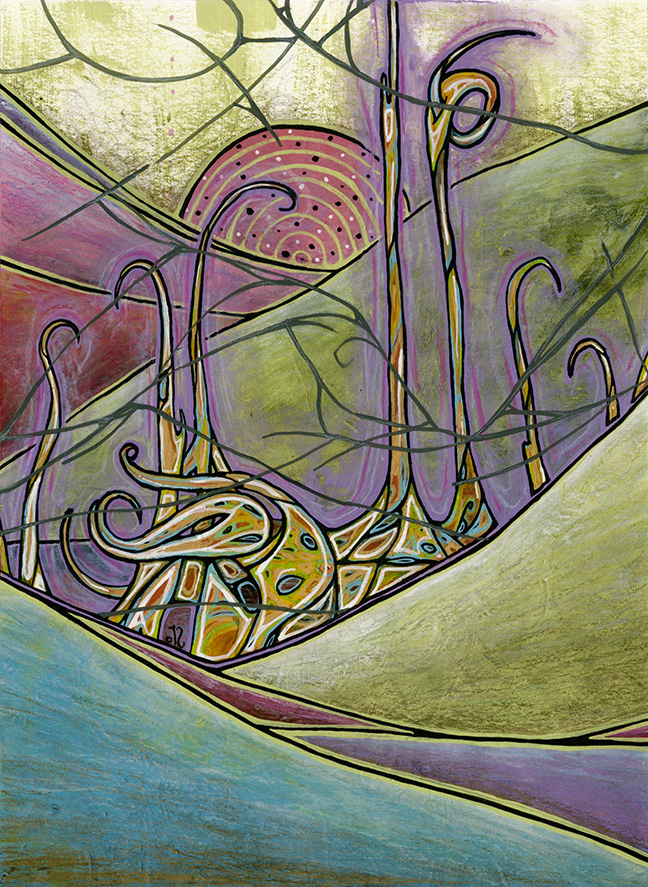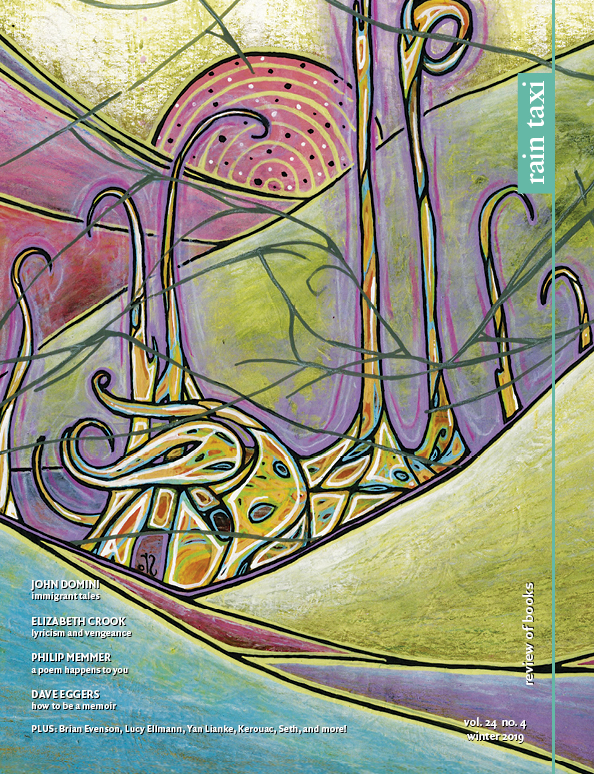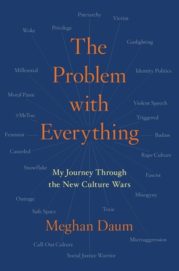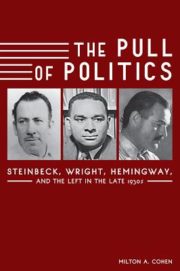
Interviewed by Allan Vorda
Mark Haber was born in Washington D.C., grew up in Florida, and moved to Houston with his wife in 2012. He has taught middle school as well as high school, and currently is a bookseller and operations manager at Brazos Bookstore. He has previously published a collection of short stories titled Deathbed Conversions (Summerfolk Press, 2008), but his star is sure to rise with the recent publication of his first novel, Reinhardt’s Garden (Coffee House Press). Written in the form of a single, blistering paragraph, and detailing the travails of a Croatian named Jacov Reinhardt, who is in the midst of writing a treatise about melancholy, Reinhardt’s Garden offers a unique and playful take into the heart of darkness. It was recently longlisted for the PEN/Hemingway award for a debut novel. This interview was conducted on July 26, 2019, in Houston.
Allan Vorda: Melancholy has a long cultural history dating back to medieval medicine; it is also linked to creativity and writers such as Robert Burton, Milton, Keats, Goethe, and Tolstoy have written about it. Was Burton’s The Anatomy of Melancholy a major source? What motivated you to write about melancholy in the first place?
 Mark Haber: I didn’t set out to write about melancholy. Writing fiction is a sort of nebulous act, even magical, and I’ve always wanted to keep it that way. I think setting out with an agenda, or a subject or a ‘big idea’ if you will, is the territory of nonfiction. If you want to tackle your life, write a memoir. If you want to write about the Cuban Missile Crisis, do research and write about the Cuban Missile Crisis. If I went into a story or a novel knowing exactly what I was aiming for I think I’d be in trouble. Fiction writers don’t write what they know, but what they want to know. Fiction is storytelling, but it’s also asking questions and looking into yourself. I believe in improvisation; I need to sit down each morning unsure of where the story is going to take me. No storyboard. No organizing chapters. In a word, intuition. I knew certain things I wanted to do, of course, but only aesthetically: I wanted the book to take place in a jungle; I wanted the text to be dense yet accessible; I wanted it to be digressive. I let my imagination take over from there.
Mark Haber: I didn’t set out to write about melancholy. Writing fiction is a sort of nebulous act, even magical, and I’ve always wanted to keep it that way. I think setting out with an agenda, or a subject or a ‘big idea’ if you will, is the territory of nonfiction. If you want to tackle your life, write a memoir. If you want to write about the Cuban Missile Crisis, do research and write about the Cuban Missile Crisis. If I went into a story or a novel knowing exactly what I was aiming for I think I’d be in trouble. Fiction writers don’t write what they know, but what they want to know. Fiction is storytelling, but it’s also asking questions and looking into yourself. I believe in improvisation; I need to sit down each morning unsure of where the story is going to take me. No storyboard. No organizing chapters. In a word, intuition. I knew certain things I wanted to do, of course, but only aesthetically: I wanted the book to take place in a jungle; I wanted the text to be dense yet accessible; I wanted it to be digressive. I let my imagination take over from there.
The Anatomy of Melancholy wasn’t so much a source of inspirations, but I’m certainly a fan and love to dip into it once or twice a year. It’s endlessly digressive and very, very funny.
AV: Reinhardt’s Garden consists of 150 pages of a single paragraph provided by an omniscient narrator who is the factotum for Reinhardt. How did you decide to write your novel in this style?
MH: I wish I could take credit, but the book is heavily influenced by Thomas Bernhard, an Austrian writer and in my opinion, as well as many others, a master. The relentless cadence, the musicality, the repetition—that’s all influenced by Bernhard. He would riff for four or five pages on a single, obsessive thing and then move on to something else, only to return to it five pages later after riffing or complaining about something else. Bernhard’s novels are basically literary rants, angry and poetic monologues. To me there’s such joy and pleasure in the darkness, but his novels never struck me as particularly depressing, which is a common complaint. There’s also a command of language that’s incredible.
So the idea of a single paragraph novel is nothing new. I did, however, want my book to be filled with incident and action. Whereas Bernhard’s books are almost solely ‘interior’ so to speak, Reinhardt’s Garden vacillates between the internal and the external world. Another influence was Bolaño’s By Night in Chile, a slender novel but also an unbroken paragraph, and it’s a magic trick to me. I’ve read that book probably three times cover to cover, and it’s only 130 pages, but it goes everywhere. I should also mention Laszlo Krasznahorkai’s The Last Wolf, a small novella that’s actually a single sentence; Zama by Antonio Di Benedetto, a Latin American classic; and Conrad’s Heart of Darkness—all were influential.
The single paragraph is an aesthetic choice. I think a page of unbroken narrative, if it’s really good, is beautiful to just look at. It wasn’t to make the book difficult or literary, but to capture the stream-of-consciousness of the narrator, and, of course, to have pages and pages of beautiful unbroken text. I can read a page by Mathias Enard or Bolaño or Clarice Lispector, who are incredibly dense writers, but for me their unbroken text is simply beautiful.
AV: Early on you describe Jacov’s adoration of dust: “dust, in a window, for example, creates a film that distorts the natural world. Just as melancholy darkens one’s worldview, he continued, not to alter reality but to transpose reality, to elevate reality, to improve reality, dust does the same.” What inspired this unusual analogy?
MH: I’m not sure. Probably the idea that we spend our lives trying to get rid of this thing that never really goes away. The battle against things like dust or old age or decrepitude are futile, no? There was no deeper meaning. I just attempt to get inside my character’s heads and this is what Jacov would’ve likely thought of dust. Plus, he’s certainly a person who seeks to be contradictory, so setting himself apart is important: “People hate dust? Fine! I worship dust!”
AV: The narrator tells Jacov that “the absence of melancholy was a thing to aspire to . . . a life in search of happiness seemed the acme of a life well lived.” Jacov laughs at this comment and responds that melancholy “is transcendental, divine, and nothing a wise person should run from, but instead something to meet head on.” Can you briefly explain what is behind Jacov’s obsessive search to describe melancholy?
MH: I’m not wholly convinced Jacov cares about melancholy—I think he wants to be thought of, looked upon, and regarded as a celebrated intellectual. That’s why he resents Klein and his followers so much, because Klein is respected and talked about. Despite his so-called abhorrence to fame, I think Jacov is frightened of obscurity.
AV: The narration of Reinhardt’s Garden meanders across time and geography, with no paragraphs to indicate shifts. Was it difficult to write these non-chronological scenes?
MH: It was hard and it wasn’t hard, if that makes sense. I did it, but if I had to go back and tell you how I did it, I would be at a bit of a loss. I wrote the book chronologically, the way the reader reads it. I would go back, of course, and edit or change things as I went along, but I wrote the book in order. So the challenge was in knowing when it was time to leave the jungle or return to the jungle; in other words, when to have a flashback or when to be in real-time. If I found myself floundering I’d tell myself, “Okay, let’s go back to Germany or Croatia.” It was very organic. I was concerned with making sure the narrative was easy to follow. Sometimes it was a challenge and I would get lost in my own text; sometimes it felt like I was in the jungle myself. But it was also a very easy book to write, in that I saw what I wanted and just sprinted after it. I was extremely focused and just chased the story so it wouldn’t get away. That’s part of the reason the book feels like a sprint—because I was chasing the story.
AV: Reinhardt in old German means “brave counsel.” Why did you choose this name—and any correlation to Robert Stone’s character of the same name in A Hall of Mirrors?
MH: I did a little research and saw that Jacov was a common name in Croatia. It’s really that simple. He had a different name for about the first third of my writing the book.; it didn’t feel right so I changed it to Jacov, which seemed to fit. I’ve never read A Hall of Mirrors, although I’ve heard of it. I don’t try and put too much emphasis on character’s names; there’s no symbolism or deeper meaning, I just want the name to feel natural and not draw attention to itself. I don’t want the names of characters to be distractions.
AV: When Jacov moves to Stuttgart, he decides to build a second castle. Its hallways “gradually narrowed into dead ends, stairways assembled to climb straight into walls . . . giving even the most well-balanced visitor an impending sense of vertigo; every ceiling vaulted to convey emptiness and desolation.” If Jacov’s building of a castle is his attempt to recreate his garden memory of his sister Vita, who died when he was nine, then why does Jacov build a second castle that is like a labyrinth?
MH: I’m not sure. I mean, the entire book is really about not communicating—the inability or refusal to communicate and understand. We have a man who created a language around his dead sister Vita. Reinhardt then spends his adult life switching the meaning of his so-called favorite philosopher/writer to fit his understanding. They’re in a jungle with an interpreter who can’t speak or understand any of the languages. The entire novel is filled with people not being able to communicate, or hearing only what they want to hear. The castle is really for comic effect, and to illustrate the absurdity of Jacov’s vision or obsession.
AV: “As Jacov spoke, a ringlet of light would descend above his head, and though I never mentioned it, I saw it countless times, no matter if the day was bleak and beclouded, those obstinate days of gray so copious in Stuttgart, and though there appeared no scientific reason for the halo to exist, throbbing and trembling like a star, it was perhaps a reminder of why I fell in love with the immensity of this great man . . .” Is this a narrator the reader can trust?
MH: The narrator is genuine; he believes what he says. But can the reader? I don’t know. That’s for you to decide.
AV: “Success and praise in one’s lifetime, Jacov said, is repulsive; it’s merely strutting in front of the mirror like a rooster—fun perhaps, but an utter waste of time.” What are your thoughts about success and praise for a writer?
MH: I think success is fine. Of course, everyone’s definition of success is different. The fact that Coffee House is publishing my book, a press I greatly admire, is success for me. It’s a dream. Being able to continue writing and (hopefully) getting published—that’s success for me. Anything more would be great, but I don’t expect it. There are so many writers who struggle to get their work recognized. It’s nice to see my book as a finished ‘thing’ that can be discussed, and to show people something they haven’t seen before. The fact is, I sat in my apartment in Houston and created this weird story. Now it will be read by others who are willing to escape and go to that place I created—so in my mind I’ve already succeeded.
Spending my twenties and thirties writing and mostly failing was a great lesson. It’s very humbling. I take nothing for granted. I wrote two so-so books in my twenties and, thank God, they were never published; yet it taught me to just do the work. You have to love the work and feel compelled to do it. I stopped writing almost completely when I was teaching high school and the part of me I love the best went to sleep. I was literally hibernating.
AV: Ulrich is hired by Tolstoy’s wife to get rid of the mongrel dogs that ravage Tolstoy’s estate. Should the reader look upon these wild dogs as a foreshadowing of the Bolshevik revolution, or perhaps read these “hellhounds” as akin to those from Milton’s Paradise Lost?
MH: I have no idea. I wanted Tolstoy’s estate overtaken by dogs because it’s funny! Does that mean there’s a deeper meaning? I don’t know. It’s up to the reader to take what they want from a novel. It makes perfect sense to me now that you say it, but it never occurred to me.
AV: Jacov was extremely close to his younger sister, Vita, who dies at a young age. Vita is not wholly visible in the novel, but she permeates the book through Jacov’s thoughts and is the catalyst in his search to understand melancholy. What prompted you to create the character of Vita, who is almost like a ghost in the novel?
MH: Jacov needed a catalyst to support his extreme view and obsession, and the death of his sister is that catalyst. The strange tongue they spoke in, the memories he has of their brief time together—these are all infused with an importance that only has meaning for Jacov. It’s like our youth: what matters to most of us is of very little or no importance to a stranger. Vita hovers over the story but, in most ways, the novel is really Jacov’s story.
AV: A major influence on Jacov was reading Tolstoy’s The Death of Ivan Iylich. What made you choose this as a lodestar for Jacov?
MH: I’m a huge fan of 19th century Russian literature—all the big names, and the more obscure names, too. I wanted to use The Death of Ivan Iylich because it’s so small that Jacov, who detests literature, would probably give it a go. It’s one of my favorite stories since it deals with many of the same themes as Reinhardt’s Garden, as far as mortality and the meaning of life. You know, the big stuff. It was also sort of a tip of the hat to small books. I love War and Peace and Anna Karenina, but they get all the press.
AV: Reinhardt’s Garden takes place in various locations, such as Stuttgart, Prague, Budapest, Berlin, San Rafael, and Montevideo. Have you been to any of these places? If so, how helpful was it for your writing to be there?
MH: The biggest influence has been literature and books. I’ve been to Europe only once, which was to Sweden, and as far as Latin America, only to Mexico. It’s a mixture of research, invention, and the mystery of a place. Sometimes it’s better not to go because you can invent it for yourself and, hopefully, for the reader. You end up inventing not a real place or the memory of a place, but a third place that only exists in the mind.
AV: You work as a manager at Brazos Bookstore, so you must come across a lot of hidden gems. Can you name a few you admire?
MH: My choices for reading are definitely not methodical. I tend to choose books based on publisher. If you find books by a good publisher then you can trust they always have something interesting. Some of those publishers would be: Two Lines Press, New Directions, Transit Books, Coffee House, Dorothy, Open Letter, Seagull Books, Coach House, Graywolf, and New York Review Books, to name a few. I’m also passionate about books in translation, which most of these publishers specialize in. You can look at my influences and see almost all of them are translated from another language.
AV: I was alerted to your novel by chance, but I want to state Reinhardt’s Garden is a fascinating, even tremendous, work of literature. Thank you for doing this interview.
MH: This was a pleasure, Allan. Thank you.
Click here to purchase this book
at your local independent bookstore


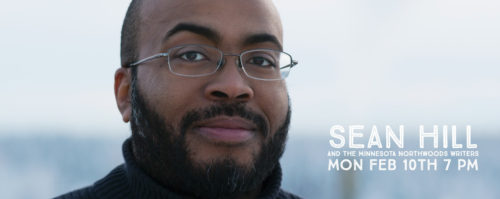




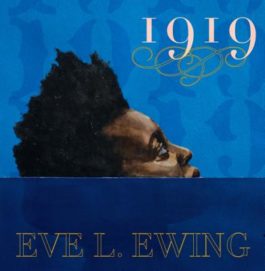 Eve L. Ewing
Eve L. Ewing 